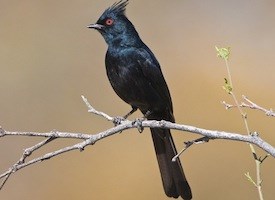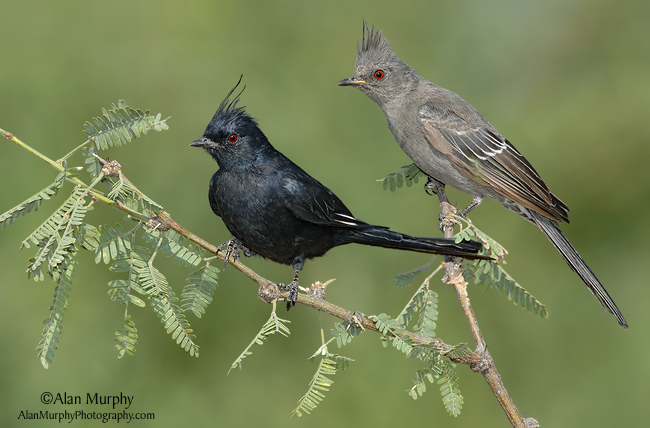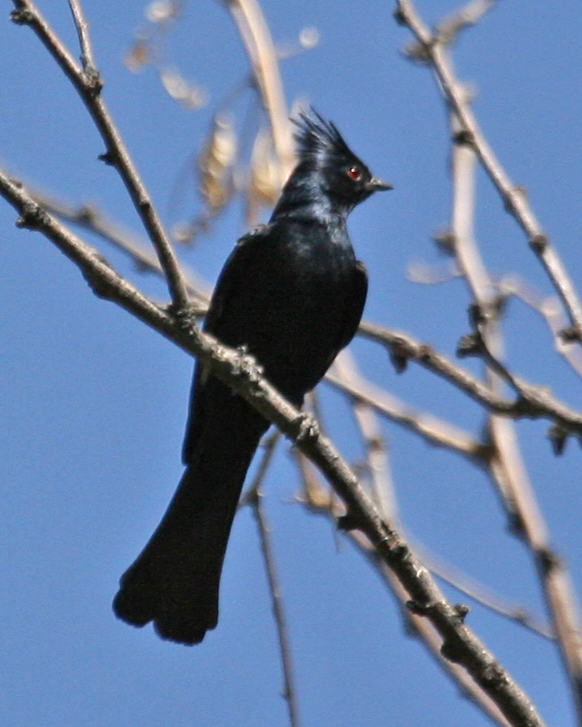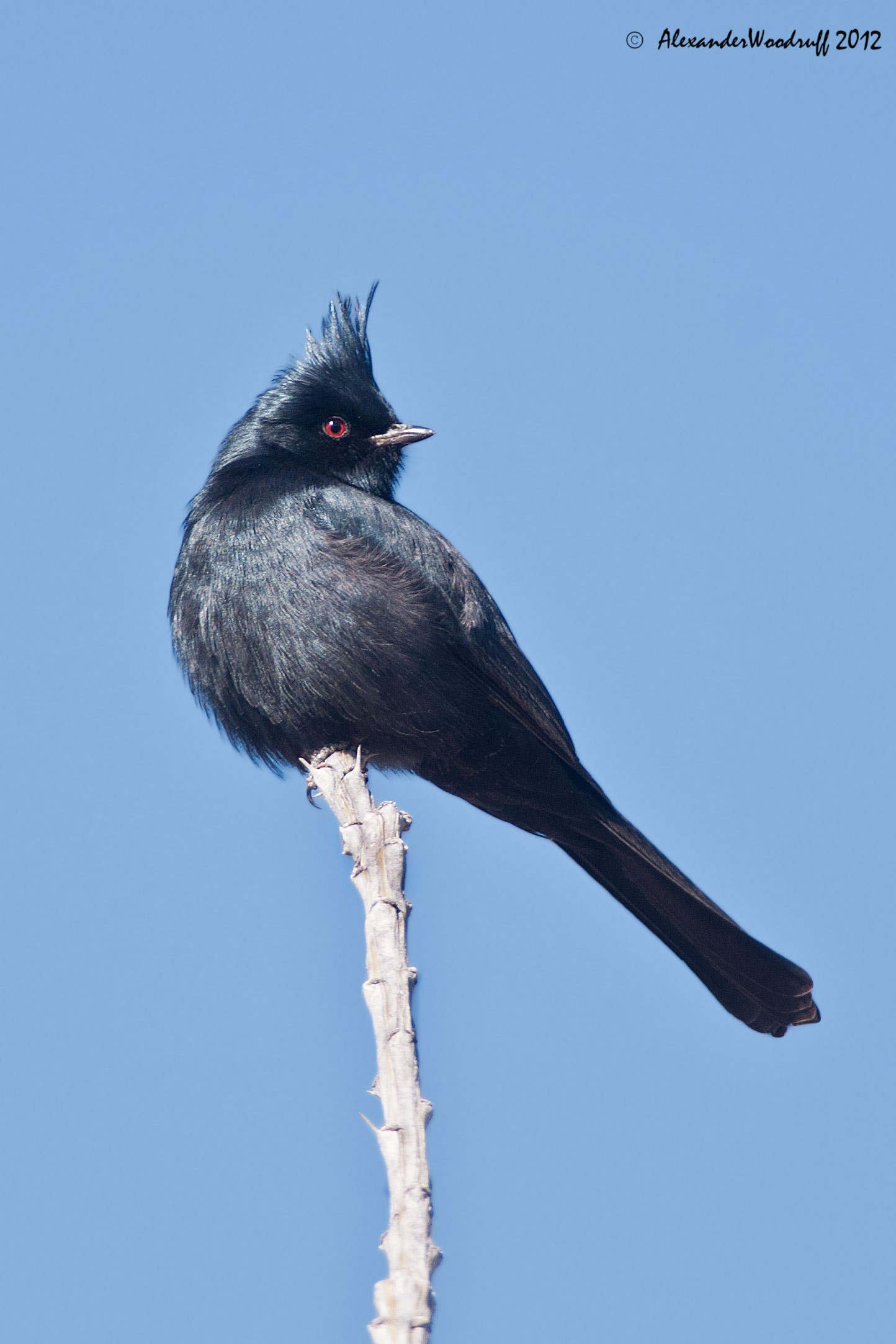
Phainopepla nitens
SUBFAMILY
Ptilogonatinae
TAXONOMY
Phainopepla nitens Swainson, 1838. This species is often considered
a distinct family.
OTHER COMMON NAMES
French: Phйnopиple luisant; German: Trauerseidenschnдpper;
Spanish: Papamoscas Sedoso.
PHYSICAL CHARACTERISTICS
6.3–9.4 in (16–24 cm) Sleek, long-tailed, crested birds with
rounded wings. Adult male has a short black bill and ragged
crest, glossy black with white patches on wings (white not visible
when perching). Female is ashy-gray with whitish edges on
all wing feathers. Juvenile resembles female, gradually acquires
black feathers throughout first year.
DISTRIBUTION
Americas only. North to central California, south to Panama.
HABITAT
Arid scrub-land and open woodland within reach of water
courses. Believed to breed in lowland deserts and then move to
higher, moister habitats.
BEHAVIOR
Somewhat social, nests in loose colonies and forms small flocks
in non-breeding season. Territory size varies with food abundance.
Call a soft-rising whistle hoi; song a mellow, gurgled
warble, series of short phrases with long pauses between krrtiiilwa.
Also mimics other species.
FEEDING ECOLOGY AND DIET
Diet mainly fruit and berries, some insects often caught on the
wing. Phainopepla is closely associated with mistletoe, a parasitic
plant that grows on many desert trees especially mesquite
(Prosopis spp.). Phainopeplas have a specialized digestive system
for consuming mistletoe berries. In the gizzard they remove
the seed and pulp from the seed coat of the berries; they then
digest the pulp and defecate the seeds and seed coat separately,
usually on the branch of the tree where the bird was perched.
The seeds sprout in the tree, continuing their parasitic lifestyle,
having been dispersed by the bird.
REPRODUCTIVE BIOLOGY
Monogamous, with large breeding territories. Breeding pairs
form loose colonies where food sources are concentrated. In a
courtship display a male flies as high as 300 ft (90 m) over his
territory, chasing the female while making circles and erratic
zig-zag patterns. Two to three grayish blue, mottled eggs laid
in cup-shaped nest of plant matter, spider webs, and hair; nest
built in central fork of a tree. Both parents incubate 14–16
days; young hatch naked and helpless. Fledge at 18–25 days.
Phainopeplas can product two to three broods per year.
CONSERVATION STATUS
Not threatened. Breeding Bird Survey data suggest population
levels have been stable since the 1960s, however, reliance on
mesquite and mistletoe makes the phainopepla vulnerable to
HABITAT
loss.
SIGNIFICANCE TO HUMANS
None known.
Photo Gallery of - Phainopepla




 Animalia Life
Animalia Life